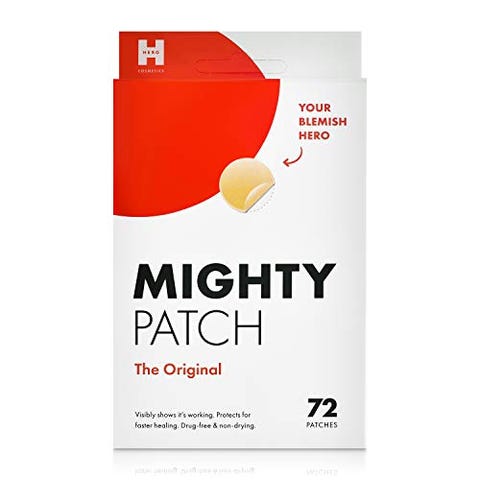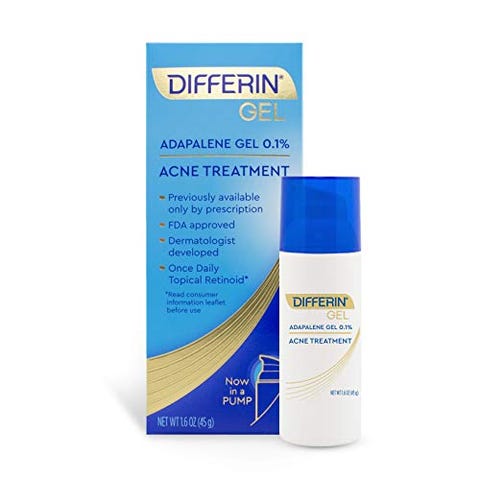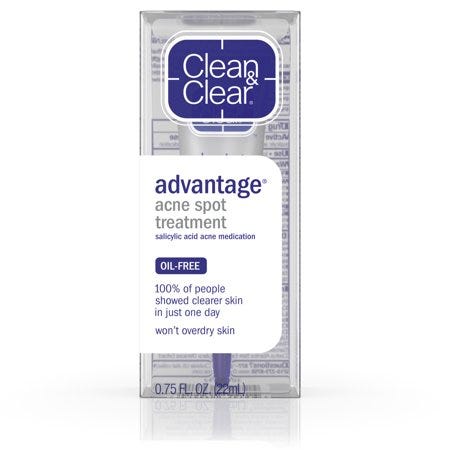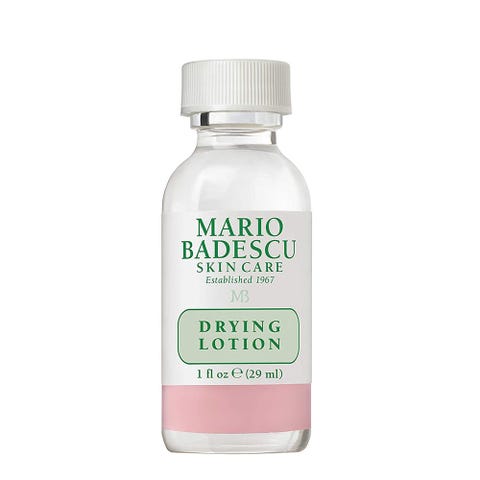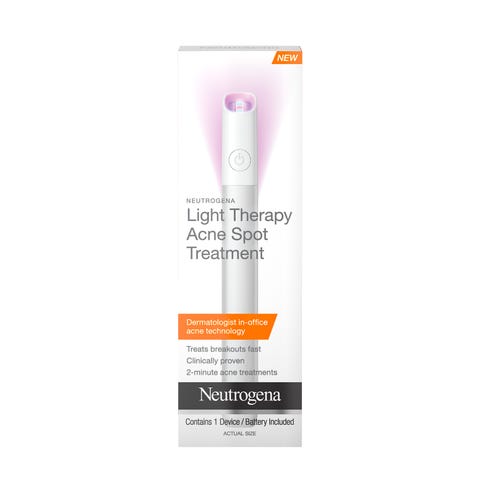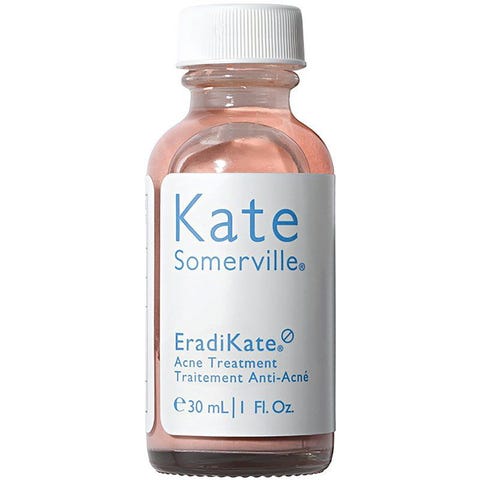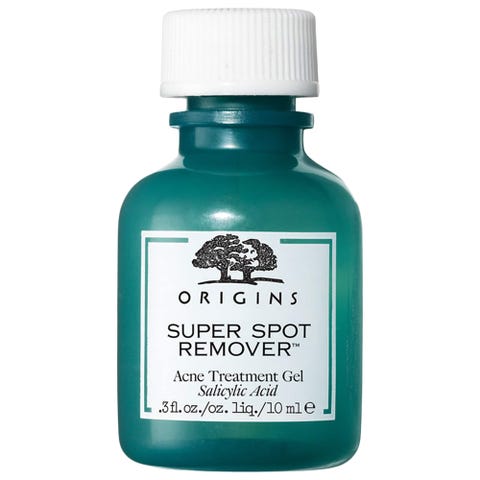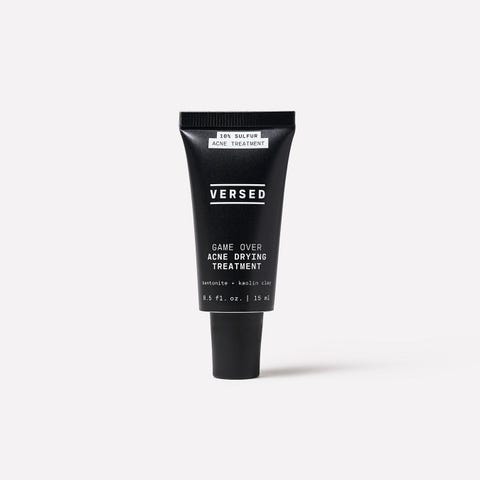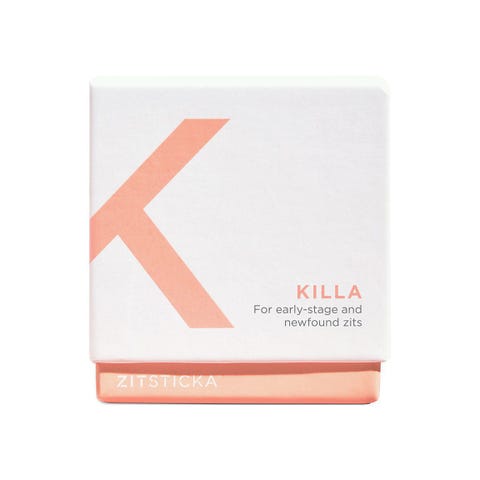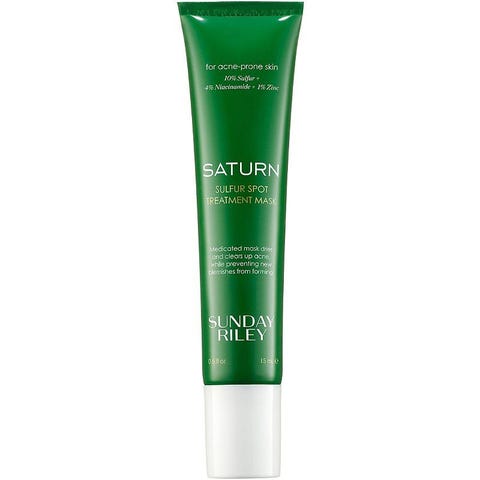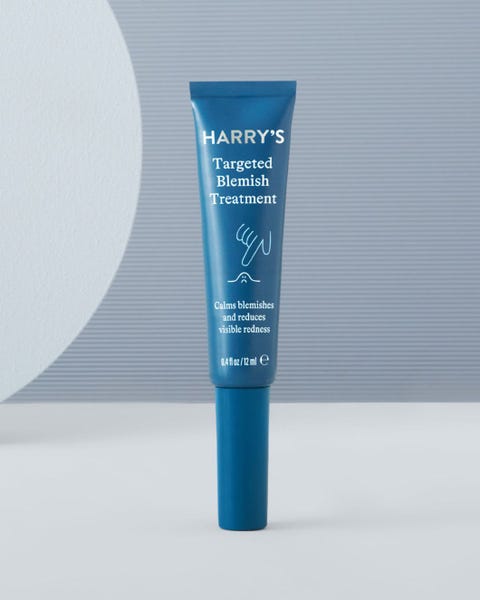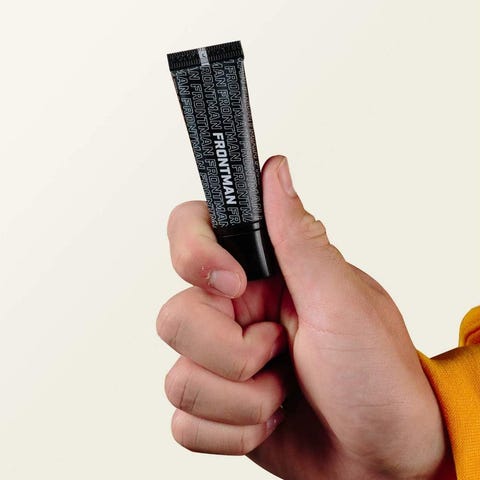The 17 Best Spot Treatments to Beat Adult Acne, According to Dermatologists

Getting zits when you’re a teenager is tough enough—and pretty much a given. But it can seem like a cruel twist of fate to keep breaking out when you’re a grown-ass man. When you look in the mirror and see whiteheads or, worse, feel those painful suckers forming beneath your skin, it’s important to remember that you’re not alone. Millions of people struggle with acne, around 50 million in the United States alone—making it by far the most common skin condition—and a large portion of those people are adults (some estimate between 20-40%). And that number may be growing.
We’re not talking just the occasional pimple, adults can struggle with full-blown chronic acne as well. It may be more common in women, but men can suffer from it, too, though the exact number of men remains a little murky. To effectively fight acne before you use an acne spot treatment, first you need to know where it comes from.
What Causes Adult Acne?
Just like the acne you get as a teenager, one of the biggest culprits of adult acne is hormones. In women, it comes from changes in estrogen like when linked to birth control or menopause. In men, it’s linked to testosterone. “We know that there are androgen receptors in the skin and testosterone is an androgen—a sex hormone,” says dermatologist Dendy Engelman, MD. Changes in testosterone inside your body can send those receptors into a fritz and lead to acne, not just on your face but all over (which is why acne has been a documented side effect of steroid use, for instance).
Another common cause, according to Dr. Engelman, is stress. “We know there is a huge neurological connection from the brain to the skin,” she notes. “With acne, there is a direct correlation between increased stress, which stresses the adrenal glands, when then make more cortisol and that directly impacts your sebaceous glands to produce more oil.” This physical response doesn’t just happen when you’re stressed, she’s quick to note, but any time there are “extremes of emotion.” In people who are acne prone, stress can make breakouts worse, but it can also mean it’s possible to notice pimples in times of stress even if you don’t have a history of acne.
According to Dr. Engelman, diet can also be a deciding factor in how often you break out. “We know diet has a direct link to acne, especially a high intake of dairy,” she says. “Studies have shown it increases something called insulin growth factor, which can break you out.” That could be why you notice more breakouts after eating a lot of dairy or even sugar. In the case of dairy as well, there could be added hormones that increase hormone-related acne in adults.
Of course, how clean your environment is, and how dirty your skin gets, can always be a factor, which is why things like pollution and environmental factors should not be discounted when discussing acne. “Pollutant particles are about 20 times smaller than our pore size, so it’s much easier for them to penetrate the skin and wreak havoc,” says Dr. Engelman. That “havoc” can mean free radical damage, hyperpigmentation, and yes, acne.
Given what’s happening right now in relation to the COVID-19 pandemic, “Maskne” could be an issue. “Acne mechanica is when rubbing and friction on the skin can lead to clogged pores and breakouts, but also the breakdown of the skin barrier,” says dermatologist Robert Finney, MD. While many dermatologists are noting increases in this specific kind of acne thanks to face masks, it is also common on the body, where skin can become irritated from rubbing against clothes, chairs, sports equipment, and more.
How Do You Treat Adult Acne?
The bad news about all of these causes of adult acne is that it can be hard to figure out what is making it happen to you in the first place. And in the case of things like stress and diet, it can take a while to resolve. “Tiny changes will actually help and some patients just address these lifestyle factors and see significant improvement,” says Dr. Engelman. In the case of hormone-related acne, imbalances in hormones are harder to diagnose and treat long term. However, treating the acne itself is fairly straightforward. When you get a pimple, or are trying to prevent one from popping up, look to the classic acne-fighting ingredients you remember from your teenage years: benzoyl peroxide, salicylic acid, and retinoids. “The treatment is by and large the same” regardless of what is causing the acne, she says.
And when it comes to using an acne treatment, stronger is not always better. “We see a lot of over-treatment because people want to see an overnight improvement,” says Dr. Finney. Over-treating can “kick your skin into irritation and that’s another vicious cycle.” Patience and consistency is key to zapping zits effectively and for good. As for what to actually put on your face, these are the best acne spot treatments for adults.
The newest zit treatments on the block are acne patches, which are tiny stickers made from hydrocolloid material that stick on top of active (or post-popped) zits. “They suck out the moisture and junk that’s in the pimple,” says Dr. Finney. Hydrocolloid patches like Mighty Patch Original are gentle and pretty non-irritating, which is especially great if you have sensitive skin, but Dr. Finney notes that some also contain other acne-fighting ingredients like salicylic acid, which could help target zits quicker, but also could be more irritating.
While not an actual spot treatment, Dr. Engelman highly recommends this retinoid in combatting both active and future pimples. “It’s a prescription-strength retinoid available over the counter,” she says. Retinoids, which are forms of Vitamin A, have been used in dermatology to fight acne for decades because of their ability to regulate cell turnover and help remove dead skin cells that could block pores. “Be mindful that it can increase skin sensitivity,” she notes and recommends using it only at night and introducing it into your routine slowly. If you’re going to combine it with other spot treatments like benzoyl peroxide, use the spot treatment in the morning and the retinoid at night.
Yes, the same acne treatment you used in high school can still work for you as an adult. That’s because this potent formula contains salicylic acid, a classic workhorse of acne treatment. “Salicylic acid is a beta hydroxy acid that is naturally anti-inflammatory and it’s an exfoliant,” says Dr. Engelman. It actually gets into pores and helps break up the chemical bonds that hold dead skin cells together and clears the pathway to removal. This treatment contains a somewhat large dose of the powerful acid, which makes it essential for anyone who gets even infrequent pimples.
“Spot treatments don’t have to break the bank to work,” says Dr. Engelman. Case in point: this powerful spot gel that contains 2% salicylic acid (that maximum strength for over the counter treatments) and is available at most drugstores. In addition to the pore-clearing ability of salicylic acid, this gel also contains witch hazel, which has been shown to soothe skin redness and irritation.
The most surprising ingredient in this lightning-fast zit zapper is sulfur, which sounds crazy, but has been shown to be a powerful acne fighter. It not only helps dry up excess oil, but it exfoliates in a similar way to salicylic acid, but some say is more gentle. Be warned: the smell is definitely, shall we say, sulfur-y, but when you’re fighting a stubborn pimple, it’s worth it.
The reason we keep reaching for this thick, goopy spot treatment is because it just plain works. The active ingredients are a powerful trio of salicylic acid, sulfur, and calamine which helps reduce redness and irritation (which is why you probably know it better as a classic poison ivy treatment). Dab a little bit on a zit when you go to bed and let it go to work overnight.
This crazy-effective acne spot treatment is like a one-two punch to your zits. The first treatment contains benzoyl peroxide, which gets down into pores and kills acne-causing bacteria, and the second is chock-full of lipohydroxy acid, which helps to gently exfoliate dead skin cells and clear pores. They’re meant to be layered for optimal effect, but benzoyl peroxide can be irritating, so start slow.
If it seems futuristic, it’s because it is, but this innovative light treatment also totally works. LED light has been shown to help curb irritation, soothe skin, and help kill bacteria which could cause acne. This light stick is designed to target specific pimples to zap them with light, instead of other masks which cover the whole face. Best of all, it’s ideal for anyone with sensitivity issues or skin allergies since there is no product to smear on your face.
Zinc has been shown to be effective in treating acne due to its oil-absorbing abilities, but according to Dr. Finney, only “in combination with other helpful ingredients.” This innovative spot treatment combines the power of zinc with exfoliating salicylic acid and sulfur to help suck up oily zits and clear clogged pores fast.
“Proactiv does a great job with both benzoyl peroxide and salicylic acid options,” according to Dr. Engelman. We’re partial to this spot treatment that contains a high percentage of benzoyl peroxide. Instead of exfoliating, like the acids found in common acne treatments, benzoyl peroxide is an antibiotic. “It kills acne-causing bacteria,” she says, but notes that it can be irritating. If you have sensitive skin or are prone to irritation, or if you have a darker skin tone prone to dark spots or pigmentation, use it sparingly and start slow.
Like other daily treatments, this acne fighter is designed to use every day to prevent breakouts from happening in the first place. Unlike others on this list, this one contains benzoyl peroxide to target the bacteria that can lead to acne, not to aid in exfoliation. It has a lower percentage of benzoyl peroxide, which makes it great for first-time users or people with mild, but consistent, breakouts.
A dollop of this gel on a zit will leave it feeling tingly—in a good way. That’s the salicylic acid going to work, but also natural essential oils like oregano, which helps to clarify pores and remove buildup. It also contains natural fruit extracts to help soothe skin and reduce inflammation at the same time it’s getting rid of your zit.
Sulfur is the ingredient you need to know in this lightning-fast zit-zapping treatment. There’s a pretty high dose (10%) that gives this cream its ability to dry out puss-filled pimples in a flash. Use it on the big juicy ones especially, but it’s also good on small ones that pop up from inflammation.
Most pimple patches work best on pussy whiteheads that feel about ready to pop, but not always the deep, cystic ones you can feel but not see. These, however, have dissolving microdarts that help deliver salicylic acid and other acne-fighting ingredients below the surface of your skin to shrink the zit before it exposes itself.
The hero ingredient in this spot treatment is sulfur, but you don’t use it like the others on this list. It’s a mask, so apply it to the zit or the breakout area, let it dry, then wash it off with warm water. The bentonite clay helps remove impurities and the tea tree oil controls oil production to keep pores clear. It’s an effective solution if you don’t like sleeping with extra stuff on your face.
This cooling gel uses the trusty standby salicylic acid, derived from wintergreen extract, to effectively kill zits and help prevent them from coming back. This formula also contains cica, which helps soothe redness and irritation, so unlike other spot treatments, it doesn’t make you choose between killing a zit and having dry, irritated skin.
The thing about zits is that they always pop up at an inconvenient time—like when you’re about to hop on a Zoom call or go on a date. And the thing about many spot treatments is that they’re effective, but they look like you have, well, a spot treatment on your face. This innovative treatment takes both of those problems out of the equation. It contains salicylic acid to kill the zit, but is also tinted to blend into your skin so you can wear it all day without anyone knowing you’re wearing a spot treatment—or even have a zit at all.
Source: Read Full Article
